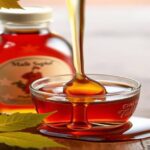Benefits of Cheese: Everyone likes to eat cheese Children also eat it with great enthusiasm. Do you know that consuming Cheese can also reduce your weight? If you don’t know, then definitely eat it. People often think eating Cheese will lead to weight gain, but it is not. This keeps the weight under control. Cheese is also a very healthy food (Cheese Benefits). It is high in fat and protein. Know what can be the health benefits of Cheese by eating Cheese.
What is Cheese?
It will not be wrong if the Cheese states the modern form of paneer. Like Cheese, it is also a type of dairy product made from milk, whereas yogurt is used to make paneer. At the same time, the bacteria in the milk make Cheese. There are two types of Cheese, soft Cheese and hard Cheese. It looks like paneer but is entirely different and tastes sweeter than paneer. It is rich in many nutrients, which can be beneficial for you. We will talk about its nutrients later in the article.
Different Types of Cheese in the world
1. Wensleydale
This Cheese was born in Wensleydale, North Yorkshire, England. It is light yellow, like a soft powder that easily breaks into small pieces. It has a tangy taste and primarily consists of dried fruits such as cranberries and apricots. This British Cheese contains 385 kcal, 31.8 g fat, 23.7 g protein, and 0.1 g carbohydrate.
2. Stilton
It is a popular thing in England which is exported all over the world. Stilton cheese was considered a staple of the British diet in the early 18th century.
It is a firm cheese that is half-soft, creamy, and yellow. It is a blue cheese that has many flavors and is sweet at the same time. This is a reasonable basis for taking vitamin K2. It contains 393 kcal, 35.7 g fat, 25 g protein, and 3.6 g carbohydrate.
3. Roquefort
Roquefort is the most popular of the many kinds of Cheese in France. It is blue and is called the king of cheeses. This Cheese is made from sheep’s milk and cooked in Roquefour-sure-Soljon in southern France. They are cooked in Roquefort-Sur-Soulzon because these caves contain bacteria that bring out the Cheese’s uniqueness. This bacterium is named Penicillium reckforti. According to studies, this bacteria helps in keeping heart disease away.
4. Ricotta
Ricotta cheese is from Germany. It is made from whey water from milk. This Cheese is sweet. It has a soft and creamy texture and is light cream. It has many health benefits, such as it is low in calories and high in protein.
5. Pecorino Romano
This is an Italian cheese and also one of the oldest cheeses. It originated in Italy and has been part of the Roman diet for centuries. Pecorino Romano is made from sheep’s milk and has a hard texture and a salty taste. It looks like Parmesan cheese, but it is more saline.
Pecorino Romano cheese is very different from General Romano cheese. Its color is light yellow. It contains 387 kcal, 26.9 g fat, 31.8 g protein, and 3.6 g carbohydrate.
6. Parmesan
Parmesan cheese originated in Italy. It is dry, tough, strong, and full of robust flavors. This thing has POD states. It means the protected designation of origin. This means it can only come from its native land, northern Italy.
If this Cheese is uncooked, you can keep it for 1 to 3 years. The effect on the texture of this thing depends on its age. It is used to add flavor to many dishes. It is light yellow. Parmesan contains 431 kcal, 28.6 g fat, 38.5 g protein, and 4.1 g carbohydrate.
7. Mozzarella
Mozzarella cheese is the most used and popular Cheese. All people mainly use it to add flavor to a dish. It is soft, creamy, and white and originated in southern Italy. Traditionally it is made from buffalo milk, but now it is also made from cow, goat, and sheep milk. It contains 318 kcal, 21.6 g protein, 24.6 g fat, and 2.5 g carbohydrate.
8. Mascarpone
It is a cream cheese that originated in Italy. This Cheese is a soft cheese made from cow’s milk or cream. It is a fresh cheese that does not undergo a fermentation process. Its color is creamy white. It is mild in appearance and soft in taste.
It is used in desserts and thick sauces with fruits. Its color is white, and the texture is creamy. It contains 429 kcal, 7.1 grams of protein, 46.4 grams of fat, and 0 carbohydrates.
9. Havarti
Havarti was born in Denmark. It is also called half-soft Danish table cheese. It is half-soft, and its texture is creamy. The age of the Cheese affects its taste. It looks like butter and has a spicy flavor. I can keep this thing for 3 months.
You can eat this with wine, fruit, or even after grilling. Its color is light yellow. It contains 292 kcal, 30.1 g protein, 18.5 g fat, and 1.4 g carbohydrate.
10. Gruyere
Gruyere cheese originated in Fribourg, in the medieval city of Gruel, Switzerland. This Cheese is complex, and its color ranges from cream to orange. You can use it for six months to 1 year. The longer it ages, the deeper its texture will be.
This thing can be eaten alone or can also be used for cooking. Raw Gruyere tastes better. It contains 413 kcal, 29.8 g protein, 32.3 g fat, and 0.4 g carbohydrate.
11. Gouda
Gouda cheese originated in the southern Netherlands. Its texture is half-hard. It is present in light and dark yellow, and its taste depends on its age.
Gouda cheese contains 356 kcal, 24.9 g protein, 27.4 g fat, and 2.2 g carbohydrate.
12. Gorgonzola
Gorgonzola is a firm cheese and originated in Italy. It is light yellow, and its texture is creamy. It contains 353 kcal, 21.4 g protein, 28.7 g fat, and 2.3 g carbohydrate. There are three types of Gorgonzola cheese.
12.1 Dolce Gorgonzola
This type of Gorgonzola cheese has a shelf life of fewer than 3 months. It is soft and creamy, which can be eaten by spreading it on anything. It has a mildly sweet flavor but is still more intense than anything else.
12.2 Piccante Gorgonzola
This type of Cheese has a lifespan of 6 to 12 months. Its texture is half-hard as well as has a pungent taste. Due to their strong flavor, they are made with other food items as cannot eat they cannot eat alone.
13. Feta
Feta is a famous Greek cheese made from sheep or goat’s milk. Like everything else, it is not named after its birthplace. Instead, fata means slice. This Cheese is soft, and its taste is salty and spicy. It can be raw, grilled, seasoned with olive oil, or eaten with herbs. It contains 246B kcal, 14.2 g protein, 21.3 g fat, and 4.1 g carbohydrate.
14. Cream
Cream cheese is the oldest Cheese. This thing is about 500 years old. It was born in the United Kingdom (UK). Cream cheese has several textures, such as half hard or full-hard. Cream cheese is high in fat and low in protein.
It looks like a white spread with a soft and creamy texture and a bit of sweetness. This Cheese contains 342 kcal, 5.9 g protein, 34.2 g fat, and 4.1 g carbohydrate.
15. Cottage
This thing originated in the United States. Its texture is creamy. It looks like curd and is very different from everything else. Its nutritional elements are also good in that both fat and calories are low. Its taste is salty, and some people do not like the look of it. It contains only 98 kcal, 11.1 g protein, 4.3 g fat, and 3.4 g carbohydrate.
16. Cheddar
Cheddar cheese is most commonly eaten. It is a soft cheese that comes in color from light white to orange. This thing originated in England, and its texture depends on its age.
Mild Cheese is soft and creamy, while older Cheese is hard and sharp. It contains 403 kcal, 24.9 g protein, 33.1 g fat, and 1.3 g carbohydrate.
17. Camembert
Camembert cheese originated in France. Its texture is soft and creamy; its color is light yellow. It is fermented in small sizes. Its taste is strong, and its taste is mildly sour. It contains 300 kcal, 19.8 g protein, 24.3 g fat, and 0.5 g carbohydrate.
18. Brie
Brie cheese originated in France. It is a soft and creamy cheese. The makers of Brie cheese add cream before the fermentation process to increase the fat content. It has a mild flavor as a small amount of lactic acid is added. It is light yellow. Brie contains 334 kcal, 20.7 g protein, 27.7 g fat, and 0.5 g carbohydrate.
Health Benefits of Cheese Eating

1. Benefits of Cheese for Oral Health
Cheese is high in calcium, the first need for strong teeth. Besides, it is shallow in lactose content. Also, Cheese is beneficial for our teeth because the sugar (glucose, maltose, or milk sugar) in food can damage the teeth.
2. Benefits of Cheese keep bones strong
Besides having a very high calcium content, Cheese is also rich in B vitamins. It is excellent for children and women (especially (having a baby developing inside the body or lactating) and older adults for building and strengthening bones and (tough, bendable body tissue). Vitamin B present in Cheese helps for proper absorption and distribution of calcium.
3. Benefits of eating Cheese for osteoporosis
Osteoporosis is a type of calcium deficiency disease caused by a lack of calcium, which decreases bone mineral density. This is especially seen in women going through menopause or beside the elderly and malnourished children. It can treat with a diet rich in protein, calcium, and vitamins. These three Main components are Present in enough Cheese. Thus, it is an ideal part of the diet for people who have osteoporosis.
4. Keep the properties of Cheese under control for hypertension
Sodium and cholesterol are two ingredients that are always considered harmful to people with hypertension. Doctors always recommend avoiding it. For this reason and things, it can take. The fat present in Cheese depends a lot on the quality of the milk. In general, higher-fat cheeses are more popular because they taste better. But, keeping in mind the public demand and health issues, low-fat Cheese is also made available in the market.
5. Benefits of eating Cheese for weight gain
Cheese is a delicious food for gaining weight Rich in protein, fat, calcium, vitamins, and minerals. Protein is essential for muscle building and the development body; calcium is considered for better and stronger bones and vitamins and minerals for better metabolic functions. You need to eat plenty of food, exercise, and get enough sleep.
Know more about the best way to weight gain
6. The medicinal properties and benefits of cheese cure cancer
One of the health benefits of Cheese is its ability to prevent cancer. Cheese contains conjugated linolenic acid and sphingolipids, which play a vital role in preventing cancer. It also has vitamin B, which maintains the body’s functions and protects it from diseases.
7. benefits of Cheese is helpful during pregnancy
Cheese is beneficial for pregnancy. Calcium in Cheese is useful for pregnant women. This helps stimulate contractions during labor. It is also beneficial for nursing mothers because its consumption increases milk production.
8. Benefits of Cheese for the skin
Cheese is very beneficial for skin health because it contains B vitamins, which help maintain smooth, healthy, and glowing skin. So starting today, includes Cheese in your diet. Everyone desires healthy skin, and Cheese can help keep your skin supple. It contains Vitamin B, which helps in cell metabolism and growth, gives you glowing skin, and lets you eliminate blemishes.
9. Uses and benefits of Cheese to treat migraine
Cheese can help treat migraine headaches. Calcium intake reduces the problem of migraine. Cheese is considered the best natural source of calcium.
10. Benefits of Cheese to Strengthen the immune system
Cheese helps make your immune system strong. Certain types of Cheese produce positive results for the proper immune system functioning. It can reduce sickness and diseases.
11. Health Benefits of Cheese for sleep
Cheese is very beneficial for stimulating sleep. It treats insomnia. Cheese contains tryptophan (an amino acid) that reduces stress and helps promote sleep.
12. The use of Cheese is beneficial for hair
Low-fat cottage cheese is rich in protein. Add it to your breakfast or lunch with eggs, fresh berries, or fruits. Cottage cheese is also a rich source of natural calcium, which is very useful for maintaining healthy and shiny hair.
Nutritional Value of Cheese
| Nutrient | Total amount |
| Water | 45.07 g |
| Energy | 307 kcal |
| Protein | 16.09 g |
| Total Lipid (Fat) | 23.06 g |
| Carbohydrate | 8.85 g |
| Sugar, total | 6.24 g |
| Minerals | |
| Calcium Ca | 1375 mg |
| Iron, Fe | 0.95 mg |
| Magnesium, mg | 34 mg |
| Phosphorus, P | 768 mg |
| Potassium, K | 295 mg |
| Sodium, Na | 1279 mg |
| Zinc, Zn | 2.21 mg |
| Vitamins | |
| Thiamine | 0.04 mg |
| Riboflavin | 0.425 mg |
| Niacin | 0.17 mg |
| Vitamin B6 | 0.124 mg |
| Folate, DFE | 18 µg |
| Vitamin B | 12 1.52 µg |
| RAE Vitamin A | 270 µg |
| (Tocopherol) Vitamin E | 0.84 mg |
| Vitamin D (D2 + D3) | 6.5 µg |
| Vitamin K | 3.1 µg |
| Lipids | |
| Total Saturated Fatty Acids | 12.931 g |
| Total Monounsaturated Fatty Acids | 5.655 g |
| Fatty Acids, Total Polysaturated | 0.99 g |
| Cholesterol | 78 mg |
Disadvantages of Eating Cheese
Some people suffer from lactose intolerance, which means that these people are unable to digest the lactose present in milk and milk products. Consuming lactose causes abdominal bloating, cramping, diarrhea, gas, and nausea, usually within 30 minutes to two hours after consuming dairy products. Levels of lactose intolerance vary. People who can tolerate lactose can usually consume Cheese.
People allergic to cow protein cannot tolerate the amount of this protein. Therefore all types of Cheese are made from mammalian milk to avoid this. According to the Oxford Handbook of Clinical Medicine, some symptoms of an allergy to cow’s milk cheese include eczema, diarrhea, gas, constipation, and asthma.
If you want to control your weight or heart condition, you should limit your cheese intake.







